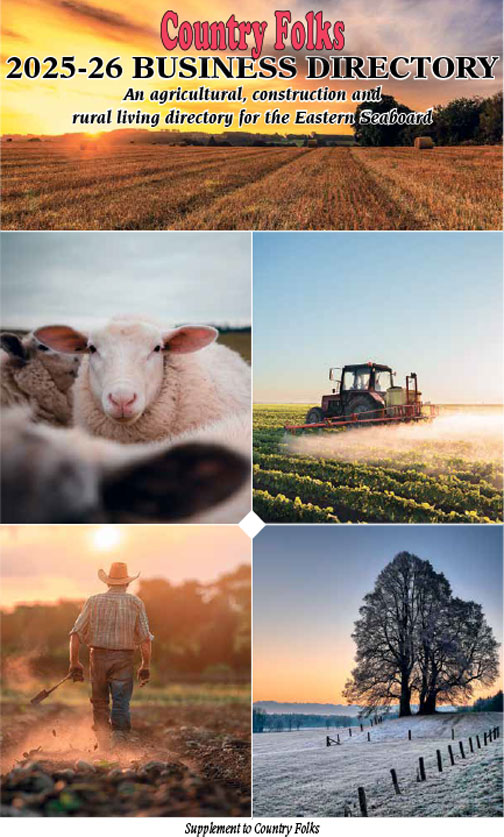Raising meat birds
Raising and processing meat birds is a profitable venture for many farms. Dr. John Boney, Penn State Extension, discussed farm-fresh poultry as a consumer favorite.
“Poultry consumption continues to increase on a per person basis,” said Boney. “There are a lot of people looking for poultry products. People have trust in small farmers that they are producing wholesome products.”
It’s important to study consumer trends and preferences in order to develop a marketing plan. During the 1960s and ‘70s, whole birds dominated the market, but today, consumers prefer poultry cuts.
The first consideration is the size and scale of the planned operation, which depends on space, time and the ability to manage meat birds. Most starter flocks can be managed by one person.
The positive aspects of raising and selling poultry include the ability to diversify the farm income stream. There’s high demand for the product, and farm soil fertility can be improved if birds are housed in a poultry tractor and moved frequently.
Negative aspects include labor requirements, especially if birds are being moved frequently for grazing. While meat bird operations are usually seasonal, some are not, and temperature fluctuations add stress. Predators can be another issue. The biggest negative is availability of processing facilities, but many farmers handle that on their own.
It’s important for supplies to be easily available. “Find a local feed store and equipment provider and ensure your needs can be met,” said Boney. “Decide how you’re going to process birds – on farm or by a custom processor? Consider the space needed to grow birds safely.”
Animals raised in confinement require three to five square feet per bird, while free-range birds require 13 to 17 square feet per bird. Whatever the system, broilers require a nutritionally complete diet – pasture is supplemental.
Purchase chicks from reputable hatcheries. If hatchlings will arrive via mail, work with the post office and have them call when the chicks arrive so they can be picked up immediately.
Choose a broiler breed based on operational goals. For most farms, the ideal breed grows fast and puts on muscle quickly, although some prefer slower growing birds for specialty markets.
“Broiler strains are some type of Cornish-Rock cross,” said Boney. “Birds have white feathers, grow fast, are feed efficient, have broad breasts, large thighs and yellow skin. These birds have been bred to produce a lot of breast meat because it’s the most profitable part of the chicken. They reach market weight in about six to nine weeks.”
The most common Cornish-Rock crosses include Jumbo Cornish x Rock, Conventional Broiler, Jumbo White Cornish Cross and Cornish x Rock.
Colored broilers are typically red or black, have moderate growth rate, moderate feed efficiency and are active foragers. They reach market weight in about 10 to 12 weeks. Birds in this category include Red Range Broiler, Royal, Rainbow Ranger Broiler and Freedom Ranger.
“They grow fast but not nearly as fast as the white birds,” said Boney. “They’re still fairly efficient, but it takes longer for them to reach market weight.”
Hatchery specials are sometimes offered, but the hatchery chooses the breeds. This means meat characteristics and time to market will vary among birds. Hatchery special options include Barbecue Special, Royal Hatchery Choice, Fry Pan Bargain and Hatchery Bargain.
Boney encourages poultry farmers to have a pre-arrival checklist. Feed should meet animal needs (starter vs. grower/developer vs. finisher) and feed trays and hoppers should be clean and dry. Day-old hatches should be able to access and consume feed easily, drink fresh water from clean waterers and be provided with the ideal temperature (90º – 95º F).
Housing for birds should be based on the needs of the operation and available labor. Boney suggested brooding young birds then moving them to houses. However, this requires careful temperature control because chicks can’t efficiently control their body temperature when they first hatch.
Young birds also have difficulty with temperature fluctuations. Variances as little as plus or minus 1º F can affect birds negatively. Minimize drafts and cool air moving across birds for a better start.
“It takes time for them to put on feathers,” said Boney. “Then they are much better able to control their body temperature. It’s important to have an area to brood them, which is usually in confinement, so you can control the temperature.” Housing should be ready for birds after feathering at around two weeks.
During the first week after hatching, chicks need 20 to 22 hours of light daily. To improve young birds’ performance, supplemental lighting should be provided. Birds with extra lighting tend to consume more feed and gain more weight. During autumn and winter, when daylight hours decrease, birds require more light.
Establish a relationship with a store that can provide guidance on feed. Feed should be a balanced diet formulated by a nutritionist. The feed store should be able to provide the appropriate diet for all stages of growing birds, preferably in pelleted form.
“Meat birds perform better on a pelleted diet,” said Boney. “Your checkbook will also be impacted because birds tend to waste a lot of feed when fed a mash. They sort and waste it.”
It’s critical to observe bird behavior throughout the growing period. They should be eating, drinking and moving around freely. Young birds concentrated under a heat lamp indicates conditions are too cold; if they’re avoiding the heat source, they may be too hot. Birds huddled in a corner may be avoiding a draft. To monitor bird growth, use a hanging scale and place several birds in a bucket to hang from the scale. Record average weight and recheck weekly.
Tracking metrics such as live weight gain, mortality, feed intake and feed conversion can help determine profitability. Maintain daily checklists including records of temperature and humidity.
Biosecurity is critical for broilers, no matter what system they’re raised in. The goal is to manage the farm for optimal bird health. If more than one flock (age group) is on the farm at the same time, always care for the youngest birds first and the oldest last.
Disease is transmitted via hair, hands, clothing, footwear, cell phones and in humans’ nasal passages. Always question visitors about their contact with other poultry in the past two days. Consider prohibiting visitors who have poultry on their farm or who have visited other poultry operations.
Boney suggested using Cooperative Extension materials for information on health concerns in broilers.
by Sally Colby





